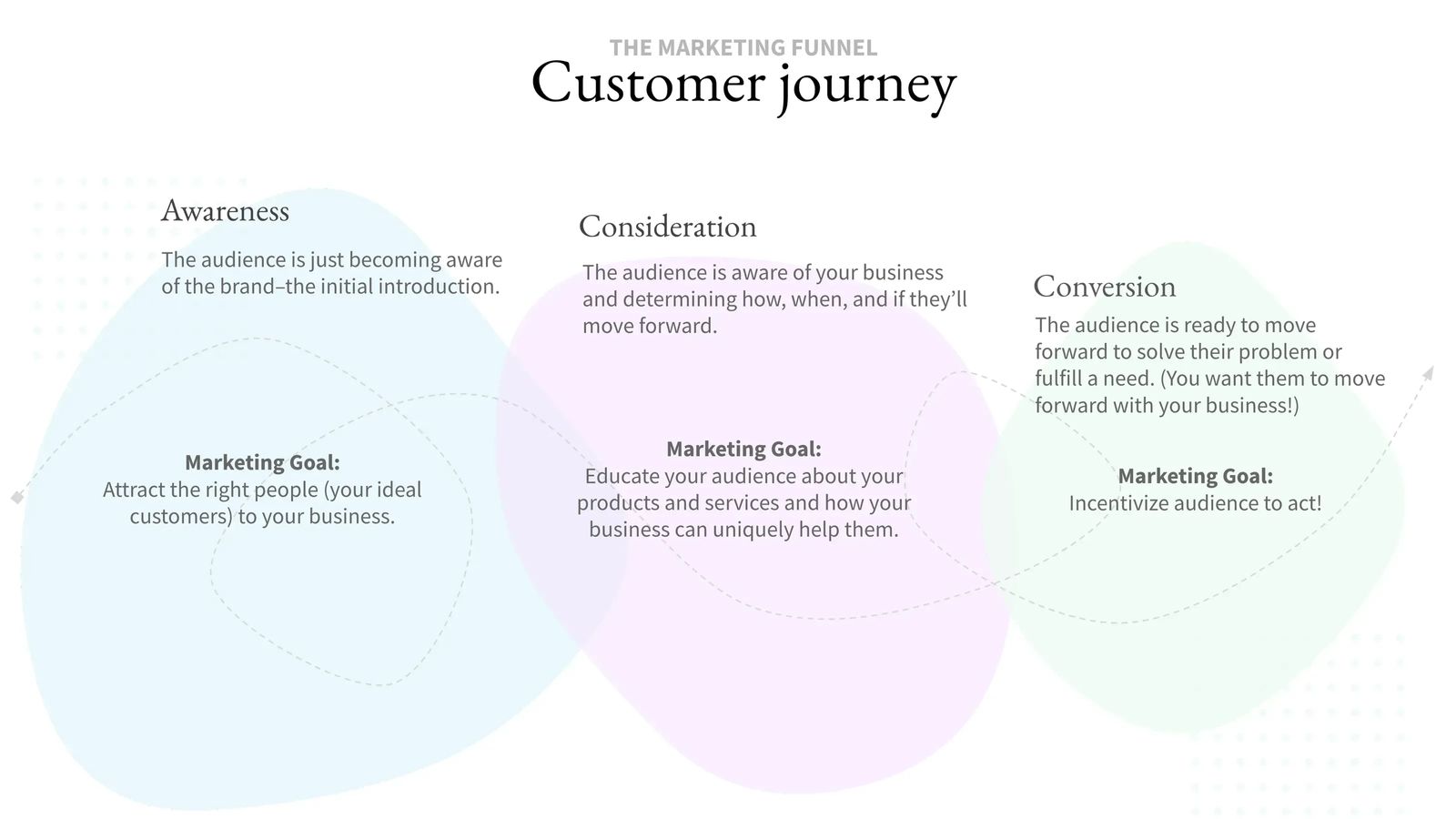
Create a winning website strategy
Jessica Baldwin / Updated February 27, 2023
You know you need a website. These days that's not enough! You also need a website strategy.
Many business owners believe they can launch a website, and their customers will find their business online. However, a website alone won't produce the results most businesses want.
Instead, you need a clear strategy that considers your customers' needs, business goals, and marketing plans.
You can win customers with your website when you execute a well-thought-out strategy.
How to develop your website strategy
Here's how to create a winning website strategy.
1) Define your ideal customer
Every successful strategy begins with a clear understanding of the target audience.
Think about the person who will resonate with your products and services. Who are they? What are their characteristics? What do they struggle with, or what do they desire? Create an ideal customer persona to help with this process.
Defining your ideal customer will help you develop a strategy to reach the right people and meet their needs.
2) Map the customer journey
What are the various steps someone may take to become your customer? Your strategy should guide your audience to take these steps. Some of your audience's actions may happen off your website, like following your brand on Instagram. However, your website will play a critical role in this process. For example, you might grow a following on social media and then push your social media audience to your website to learn more and purchase your product or service.
The customer journey has three main stages–awareness, consideration, and conversion. Your plans must make your ideal customer aware of your brand. Then you'll need to stay in front of them until they're ready to convert (become a customer).

Awareness
At the awareness stage, the goal is to get your brand discovered by the right audience (your ideal customer).
Think of this stage as a friendly introduction to your business. How can you provide value for your ideal customer while establishing a positive view of your brand?
Fill in these statements to strategize for this stage:
- I'll attract my ideal customer to my website by…
- The message I need to convey at this stage is…
For example, a landscaping company may say:
- "I'll attract my ideal customer to my website by publishing blog posts about plants that thrive in my area's climate."
- "The message I need to convey at this stage is that my landscaping company is an expert on plants and landscaping information in my area."
Consideration
At the consideration stage, the goal is to educate your audience about your products, services, and key benefits.
Stay engaged with your prospects at this stage and show them how you can uniquely help them.
Fill in these statements to strategize for this stage:
- I'll use my website to engage and educate the audience about my business by…
- The message I need to convey at this stage is…
Our example landscaping company might say:
- "I'll use my website to engage and educate the audience about my business by showcasing before and after landscaping photo galleries with customer testimonials."
- "The message I need to convey at this stage is that my landscaping company creates beautiful, affordable, high-quality landscapes."
Conversion
Your audience is aware of your brand. They've learned about your products, services, and key differentiators.
Now, they are ready to act! How can you incentivize them to move forward with your brand?
Fill in these statements to strategize for this stage:
- I'll incentivize prospects to convert through my website by…
- The primary call to action will be to… (book an appointment, purchase a product, sign up, etc.)
The message I need to convey at this stage is…
The landscaping company could say:
- "I'll incentivize prospects to convert through my website by offering a 10% discount for those who book a free landscaping consultation."
- "The primary call to action will be to book an appointment for a free consultation."
- "The message I need to convey at this stage is that it's easy and beneficial to book a free consultation and enjoy a special discount."
3) Set your website up to succeed
Next, you'll want to set your website up to help you execute your strategy. Create a user experience that serves people at each stage–awareness, consideration, and conversion.
Compelling homepage
It's essential to grab your audience's attention. Creating a compelling homepage is an important anchor to effective web design.
Your website should quickly communicate your key benefit statement or why people should choose your business over others to solve a specific problem or fulfill a need.
You'll also want to tell your visitors what to do! Let them know that your business can help them and tell them what to do next. Define your website's call to action and help your visitors take action.
Learn more about the essentials of an effective website homepage.
Website content
Develop content that will help your audience along their journey to becoming your customer. For example, you might create blog content to attract your target audience to your website at the awareness stage. Certain businesses could use photo galleries or a portfolio to educate prospects on their products or services. A page explaining a company's process containing a request for a quote form may work well for the conversion stage.
Look back to your plans for awareness, consideration, and conversion, and determine what type of information your website needs for each stage.
Here's an easy guide to planning website content.
Consider your feature needs
Think about the features you'll need for your strategy. In addition to quality information, your website will need certain functionality to help achieve your goals. For example, if you want someone to book a consultation with you, you'll need an appointment booking feature on your website. You'll need an e-commerce or payments solution if you sell physical or digital products.
Here are a few you may consider:
Blog posts and content management
Suppose blogging or developing articles for your target audience is part of your strategy. In that case, you'll want to ensure that your website has this feature.
Customizable forms
You can configure forms to take payments, webinar registrations, facilitate contests, take requests for quotes, and more.
E-newsletter integration
If you plan to grow an email list, integrate your email marketing software (Mailchimp, Convertkit, etc.) with your website. When someone signs up for your e-newsletter, they'll automatically get organized in your Mailchimp account for future communications.
Chat
Answer prospective customers' questions while they are on your website! You can install a chat feature like Facebook messenger or another chat software.
Appointment scheduling
Book meetings and appointments by adding an appointment scheduler to your website. Calendly is one popular option for this, among many others.
Landing pages
Landing pages allow you to dedicate an entire page to a specific promotion–a sale, special offer, lead magnet, and more. Landing pages are helpful within advertising and marketing campaigns to drive traffic to the promotion and increase conversions.
E-commerce and payments
If you're taking payments of any kind, you need a way to facilitate those transactions. If you need a "cart" on your website, you'll want to ensure you have e-commerce capabilities.
Analytics
Install analytics software on your website to see how your strategy is performing. See how many people visit your website, which pages are most popular, and more.
Here's more info on how to determine which features your website needs.
Getting organized is the key to website success! Plan your content and features. Get the free website planner.
4) Marketing plan
Now that your website is optimized for your audience, decide what additional marketing actions are necessary to help move your audience from awareness to conversion. Social media marketing, content creation, search engine optimization, digital advertising, email and content marketing, and traditional channels like radio, tv, or print can be useful at various customer journey stages.
Consider how various marketing tactics can help generate traffic to your website and engage your audience over time. Customize your marketing messages to resonate with your audience at each stage.
Learn more about how to market your website and create a marketing funnel.
Create your winning website strategy by:
- Defining your ideal customer
- Mapping the customer journey
- Setting up your website to meet your audience's needs
- Developing an overall marketing plan
Understand that your strategy may adapt as you observe what works best with your target market. Check your website analytics regularly to see if you're growing traffic, engagement, and conversions.
Over time, you'll have a winning website strategy that helps you gain more customers online.
Free workbook: Win customers with your website!
Create a strategy to get more leads and sales from your website.







